According to the product text, the intramuscular route of administration is recommended, vaccinating adults and older children in the deltoid muscle, using a needle 1 inch in length or greater, in order to penetrate the muscle tissue.
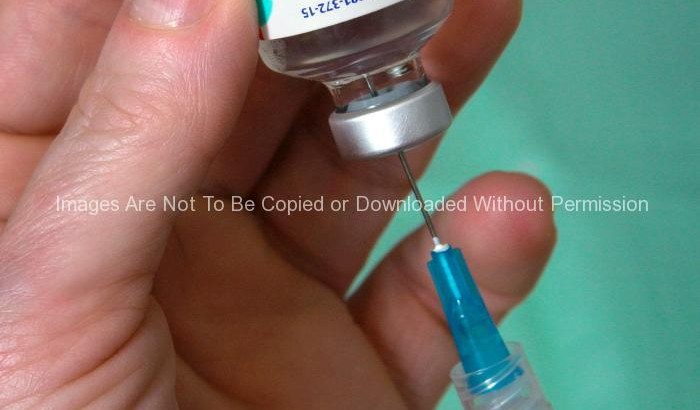
Medical workers giving flu vaccinations to children, men and women.

According to the product text, the intramuscular route of administration is recommended, vaccinating adults and older children in the deltoid muscle, using a needle 1 inch in length or greater, in order to penetrate the muscle tissue.
Depicted in this 2006 image, this man was receiving an intramuscular immunization in his left shoulder muscle. He was facilitating the procedure by lifting up his sleeve, while the nurse admistered the vaccine. With her free hand, the nurse stabilized the injection site.
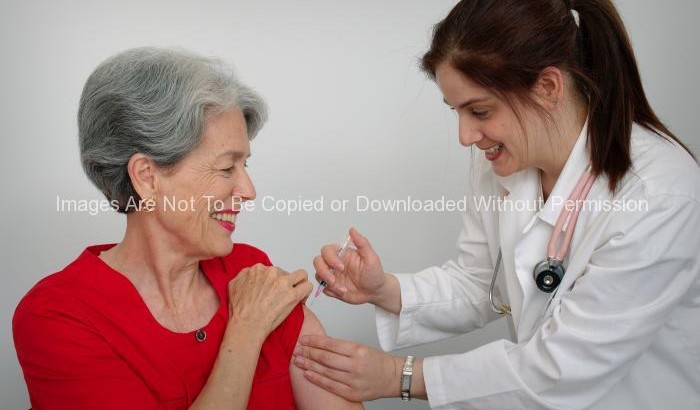
In this 2006 photograph a middle-aged woman was receiving an intramuscular vaccination into her left shoulder muscle from a female nurse.
Are there vaccines that protect against communicable diseases for adults?
Yes! Vaccinations are readily available for such common adult illnesses as influenza (flu), pneumococcal disease, herpes zoster (shingles), human papillomavirus (HPV), pertussis (whooping cough), hepatitis A and hepatitis B. Vaccinations against less common diseases such as measles, mumps, rubella (German measles), tetanus (lockjaw), diphtheria and varicella (chickenpox) are also needed by some adults. The Centers for Disease Control and Prevention’s (CDC) recommendations clearly identify people who are at risk for these diseases and who should be immunized to prevent these diseases and their complications. Consult your healthcare provider or local health department regarding your own immunization status as well as current immunization recommendations.
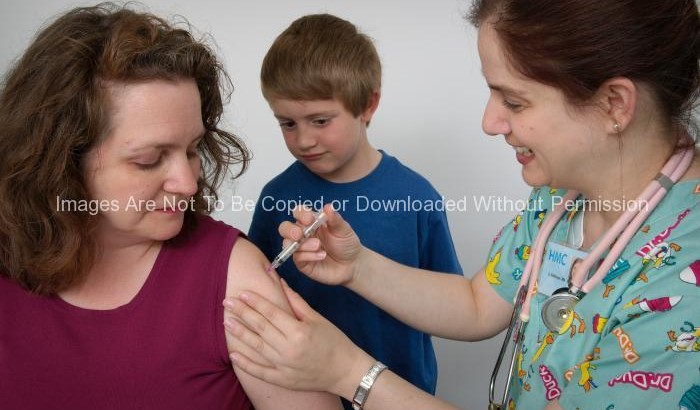
With her young son observing from behind, this 2006 photograph showed a nurse in the process of administering an intramuscular vaccination in the left shoulder muscle of this mother.
Are there vaccines that protect against communicable diseases for adults?
Yes! Vaccinations are readily available for such common adult illnesses as influenza (flu), pneumococcal disease, herpes zoster (shingles), human papillomavirus (HPV), pertussis (whooping cough), hepatitis A and hepatitis B. Vaccinations against less common diseases such as measles, mumps, rubella (German measles), tetanus (lockjaw), diphtheria and varicella (chickenpox) are also needed by some adults. The Centers for Disease Control and Prevention’s (CDC) recommendations clearly identify people who are at risk for these diseases and who should be immunized to prevent these diseases and their complications. Consult your healthcare provider or local health department regarding your own immunization status as well as current immunization recommendations.
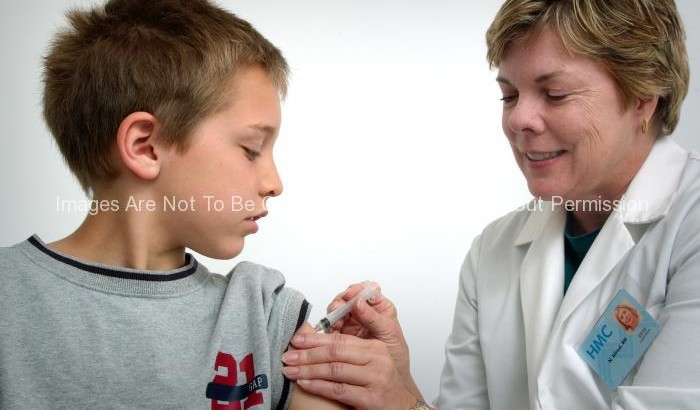
This 2006 photograph showed a nurse in the process of administering an intramuscular vaccination in the left shoulder muscle of this young, pre-teen boy.
Immunization is one of the most important things a parent can do to protect their children’s health. Today, we can protect children younger than two years old from 14 serious diseases including:
Haemophilus influenzae type b (Hib) (bacterial meningitis);Diphtheria; Hepatitis A; Hepatitis B; Influenza; Measles; Mumps; Pertussis (whooping cough); Pneumococcal disease; Polio; Rubella (German measles); Tetanus (lockjaw); Rotavirus; Varicella (chickenpox);
At least one vaccine is needed for each of these diseases, and for some diseases several doses are required for the best protection. Several “combination vaccines” exist in which multiple vaccines are given in a single shot, reducing the number of shots needed.
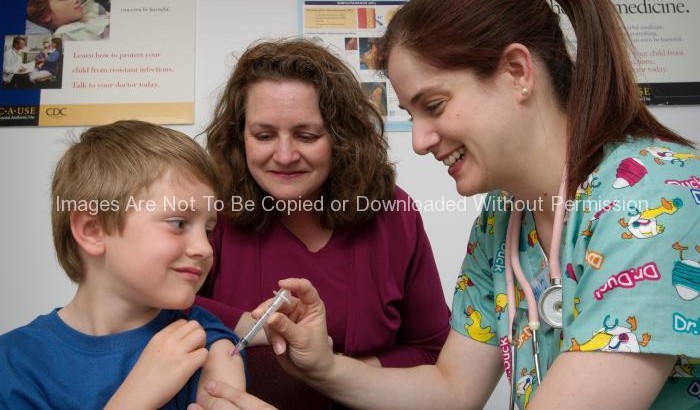
This 2006 photograph showed a nurse in the process of administering an intramuscular vaccination in the left shoulder muscle of this young, pre-teen boy.
Immunization is one of the most important things a parent can do to protect their children’s health. Today, we can protect children younger than two years old from 14 serious diseases including:
Haemophilus influenzae type b (Hib) (bacterial meningitis);Diphtheria; Hepatitis A; Hepatitis B; Influenza; Measles; Mumps; Pertussis (whooping cough); Pneumococcal disease; Polio; Rubella (German measles); Tetanus (lockjaw); Rotavirus; Varicella (chickenpox);
At least one vaccine is needed for each of these diseases, and for some diseases several doses are required for the best protection. Several “combination vaccines” exist in which multiple vaccines are given in a single shot, reducing the number of shots needed.
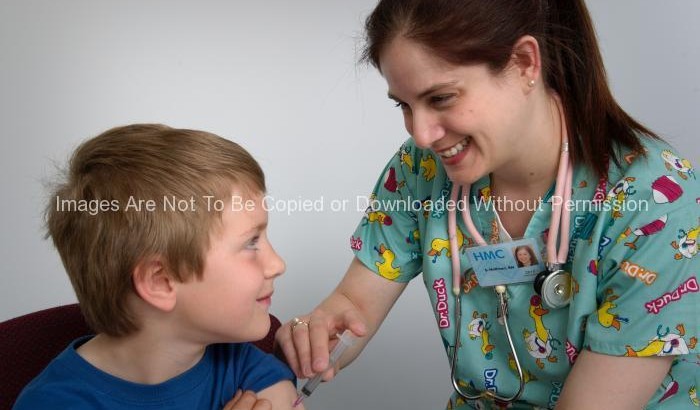
This 2006 photograph showed a nurse in the process of administering an intramuscular vaccination in the left shoulder muscle of this young, pre-teen boy.
Immunization is one of the most important things a parent can do to protect their children’s health. Today, we can protect children younger than two years old from 14 serious diseases including:
Haemophilus influenzae type b (Hib) (bacterial meningitis);Diphtheria; Hepatitis A; Hepatitis B; Influenza; Measles; Mumps; Pertussis (whooping cough); Pneumococcal disease; Polio; Rubella (German measles); Tetanus (lockjaw); Rotavirus; Varicella (chickenpox);
At least one vaccine is needed for each of these diseases, and for some diseases several doses are required for the best protection. Several “combination vaccines” exist in which multiple vaccines are given in a single shot, reducing the number of shots needed.
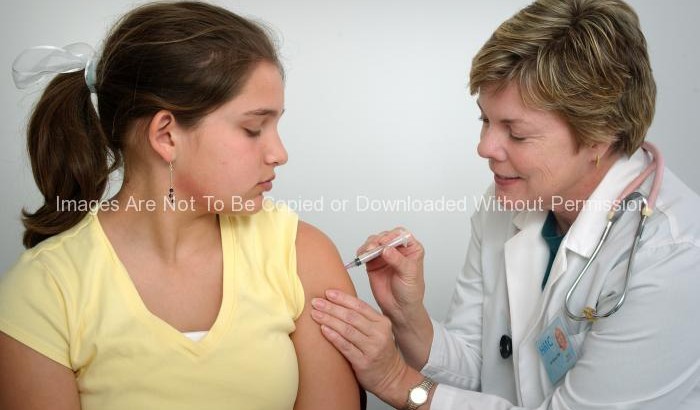
The nurse depicted in this 2006 photograph, was in the process of administering an intramuscular vaccination in the left shoulder muscle of a young girl. The nurse was pinching the overlying shoulder skin, in order to immobilize the injection site.
Immunization is one of the most important things a parent can do to protect their children’s health. Today, we can protect children younger than two years old from 14 serious diseases including:
Haemophilus influenzae type b (Hib) (bacterial meningitis);Diphtheria; Hepatitis A; Hepatitis B; Influenza; Measles; Mumps; Pertussis (whooping cough); Pneumococcal disease; Polio; Rubella (German measles); Tetanus (lockjaw); Rotavirus; Varicella (chickenpox);
At least one vaccine is needed for each of these diseases, and for some diseases several doses are required for the best protection. Several “combination vaccines” exist in which multiple vaccines are given in a single shot, reducing the number of shots needed.
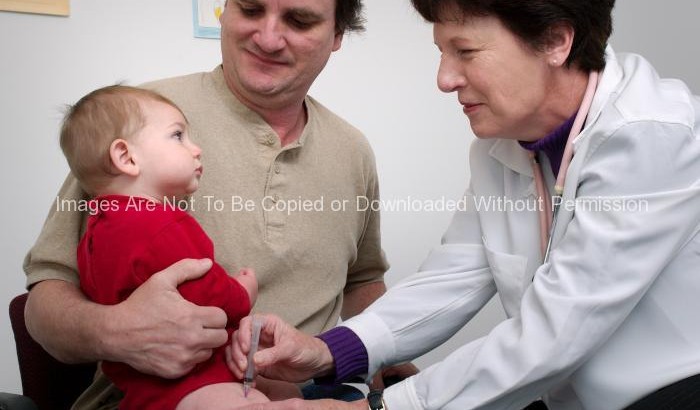
Held by his father, this infant was receiving an intramuscular immunization in his right thigh muscle, which was being administered by a qualified nurse. The nurse was distracting the infant while she stabilizing the injection site with her free hand.
Immunization is one of the most important things a parent can do to protect their children’s health. Today, we can protect children younger than two years old from 14 serious diseases including:
Haemophilus influenzae type b (Hib) (bacterial meningitis);Diphtheria; Hepatitis A; Hepatitis B; Influenza; Measles; Mumps; Pertussis (whooping cough); Pneumococcal disease; Polio; Rubella (German measles); Tetanus (lockjaw); Rotavirus; Varicella (chickenpox);
At least one vaccine is needed for each of these diseases, and for some diseases several doses are required for the best protection. Several “combination vaccines” exist in which multiple vaccines are given in a single shot, reducing the number of shots needed.
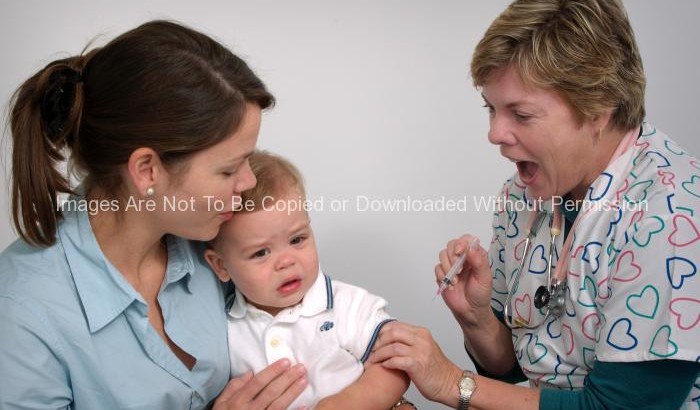
This photograph showed an infant being held by his mother, who was about to receive an intramuscular vaccination in his left arm. A qualified nurse was administering the vaccination while stabilizing the injection site.
Immunization is one of the most important things a parent can do to protect their children’s health. Today, we can protect children younger than two years old from 14 serious diseases including:
Haemophilus influenzae type b (Hib) (bacterial meningitis);Diphtheria; Hepatitis A; Hepatitis B; Influenza; Measles; Mumps; Pertussis (whooping cough); Pneumococcal disease; Polio; Rubella (German measles); Tetanus (lockjaw); Rotavirus; Varicella (chickenpox);
At least one vaccine is needed for each of these diseases, and for some diseases several doses are required for the best protection. Several “combination vaccines” exist in which multiple vaccines are given in a single shot, reducing the number of shots needed.